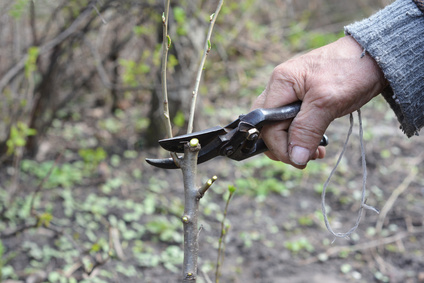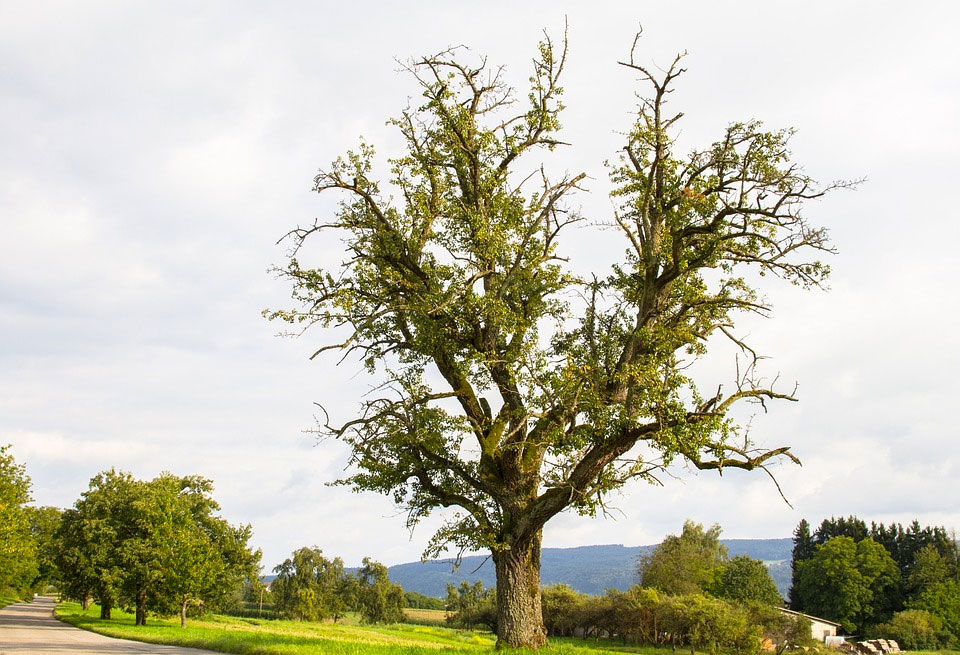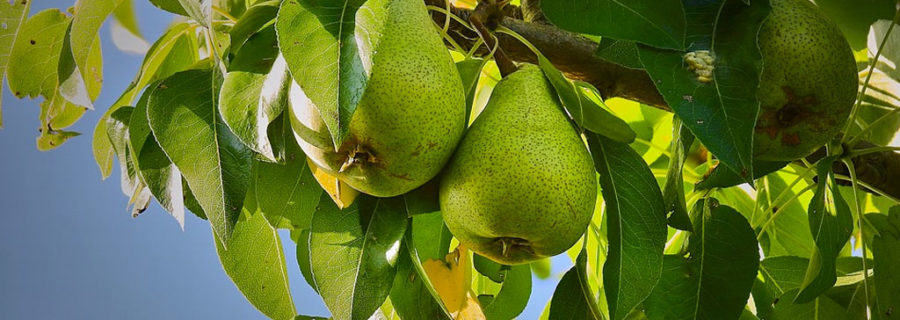When Should I Prune My Pear Tree?
Between November and the early part of March and certainly before the new buds start to appear
Need help pruning your Pear Tree? Contact Us!
Expert insight into the best time to prune a pear tree; the benefits of pruning, and how to spot the vital signs of disease.
There are several different species of pear tree, all of the genus Pyrus, a deciduous group of trees and shrubs characterised by oval leaves and white scented spring flowers, followed by brown or green fruits, some of which are edible depending on the species.
Why prune a pear tree?
Pear tree pruning stimulates and increases the growth of branches and foliage over the following two years. It also delays the production of fruit during that time so that the tree can use its energy reserves to grow strong and healthy in order to be in a position to produce heavier and better quality fruit crops in later years.
Pear tree pruning also helps to enhance the structure and shape of the tree. This has dual benefits: firstly, it will boost the aesthetic appearance of the tree, and secondly it will help to support good crops of fruit.
The more a pear tree is pruned, the stronger the regrowth, providing the tree is healthy. However, it is important to be aware that over-pruning will lead to the tree producing vigorous ‘watershoots’. These are upright branches and are best avoided as they can overcrowd the crown of the tree. The overall aim of pruning a pear tree is to create an open area within its centre. This enables a higher degree of light to penetrate the canopy which allows for the ripening of shoots and fruit, plus good air movement tends to put a stop to the spread of disease.
Old pear trees can also benefit from pruning. This is called ‘tree renovation’ and is ideal for old, neglected and overgrown trees that you are looking to restore to an attractive appearance.
It is clear to see the benefits of pruning a pear tree. But when is the best time to do it?


When is the best time for pear tree pruning?
All free standing fruit bushes and trees should only be pruned during their dormant period. This is during the winter, between November and the early part of March and certainly before the new buds start to appear and after the leaves have started to fall.
Trained fruit trees including trained pear trees on the other hand should be pruned in the summer, preferably in late August or early September, although during their early formative years, some winter pruning is also a good idea.
Remember that as a rule, winter pruning will encourage rapid growth. If you are training your pear tree then you won’t want to spoil its shape, which is why summer pruning is best in these circumstances. A little tidying in winter is fine though in most cases.
A young pear tree of between one and two years of age will require good formative pruning to help it establish a well-balanced branch system. Early pruning will set the tree up with a strong structure for its future, meaning it should be able to bear good crops of healthy fruit for several years, not to mention it will present an attractive appearance. Early formative pruning will also assist in making the pear tree much easier to manage later on.

A young pear tree of between one and two years of age will require good formative pruning to help it establish a well-balanced branch system.
It is important to not allow a young pear tree to bear fruit until its second year, and then only if the tree is becoming well-established and growing healthily. Even then, you should only allow minimal fruit to develop – say one or two – and remove the rest as soon as you see them.
Pear tree renovation is best carried out between November and February when the tree is not in leaf. It will encourage strong new growth come the spring, as well as making it easier to see what is being done. There is a lot involved in this process and it should be done over a few years rather than all in one go. Too much pruning will only encourage excessive, unfruitful growth. The Royal Horticultural Society recommends that anyone seeking to renovate an old pear tree considers using a qualified arborist due to the fact that there will be usually be lots of heavy branches to contend with, usually at height.
What to look for when pruning a pear tree
Whilst pruning a pear tree, there are certain things to look out for. Firstly, dark, flaky patches on branches could denote apple canker. Any branches or shoots bearing this should be cut out providing it’s not the main trunk or a major limb.
Secondly, shrivelled fruit attached to the shoots during the autumn could be a sign of brown rot. Prune these out and destroy them.
Also look out for shrivelled, brown blossoms and flowered shoot tips that have died back. These could denote blossom wilt and will usually be seen in late spring or early summer.
If you find there are lots of dead branches then there could be a root problem such as honey fungus. Never leave this unattended: ensure you consult with a qualified tree surgeon without delay as this can be a major issue. Another problem that should without hesitation be referred to an experienced tree surgeon is the appearance of cavities in the tree that appear to be getter larger. If the tree doesn’t look in good health and fungus is appearing on the stem then don’t delay in taking professional advice.
If you see any lichen (green/grey crusty growths) on the branches then it won’t usually be anything to worry about.
Tree Preservation Orders
Never proceed with any tree work without first checking for the presence of a Tree Preservation Order (TPO). If one is in place then permission will be needed for the works, and this can take up to eight weeks to come through. Furthermore, if the tree is sited in a conservation area, permission will be needed for any works.

The importance of pear tree pruning expertise
No matter what species of tree you are looking to prune, you should not consider going ahead unless you have a good understanding of tree biology. Incorrect pruning can lead to lasting damage and may even shorten the tree’s lifespan. This is particularly so with fruit bearing trees such as the pear tree which can be tricky to manage. There is a lot of knowledge required when it comes to pear tree pruning, and if you really want to encourage the healthy growth of your tree and enjoy quality fruit harvests in the future, you should seriously consider calling in specialist, qualified assistance.
If you have a pear tree on your land that needs pruning, why not talk to T.H. Tree Services? As fully qualified and highly experienced tree surgeons, we are able to offer extensive knowledge and skill when it comes to pear tree pruning. For a free, no-obligation quotation, give us a call on 01268 642814 or get in touch here.
Had a fallen tree in the early hours of Monday morning, called for quote and the team had it cleared on the same day. Really good communication when the lads were onsite and did a great job. Lots of pride in their work shown with the thorough clear up. Would thoroughly recommend.
Thank you Stuart for your kind review. We were glad to be able to help you with your fallen tree. If there's anything else you need in the future, please don't hesitate to get in touch.







